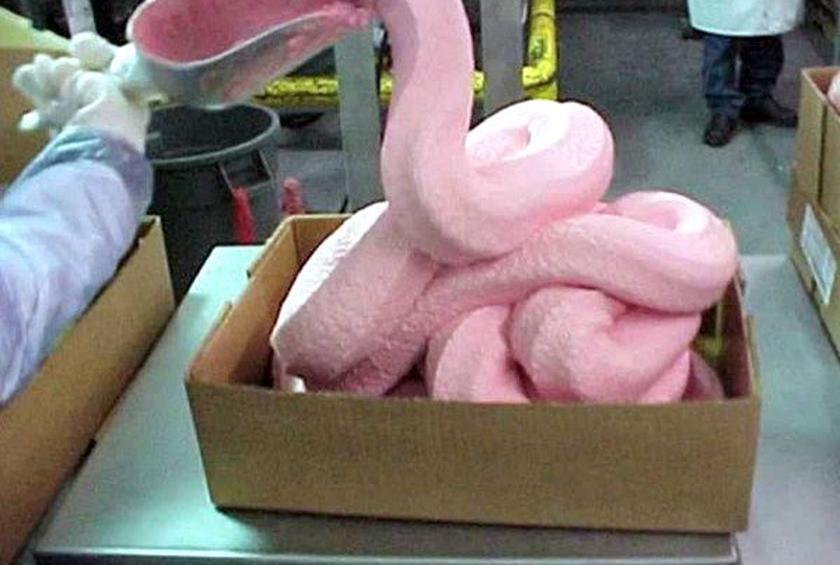Do you remember the “pink slime” controversy of 2012? Well, ABC News ran a story on Beef Products Inc. (BPI), a South Dakota-based meat processing company who produced a beef filler that looked just like pink slime and the story damaged the company’s brand…
“For years, the company has argued that its signature product is safe, wholesome, and not unlike everyday burger meat. Now, BPI has enlisted a powerful ally in its effort to recoup its image and reclassify its product: the federal government.
After a months-long evaluation, the United States Department of Agriculture’s Food Safety and Inspection Service (FSIS) determined in December that BPI’s signature product…can be labeled ‘ground beef.’ Legally speaking, it’s now no different from ordinary hamburger, and could even be sold directly to the public.”1
Disgusting. But not entirely surprising.
The Department of Ag’s FSIS claims to have reviewed BPI’s submission “of a new product and new production process”1 and determined that the product “meets the regulatory definition of ground beef under the law in 9 CFR 319.15(a) and may be labeled accordingly.”1
So what is the slime, exactly? Carcass cuttings (or “trim”). And they create and use it to create products with an exact fat content.
“…beef trim is ferried over from the kill floor to BPI’s plant by conveyor, where it’s warmed to about 100 degrees and sent through a centrifuge that separates the fat from the meat. The liquified fat can then be sold as tallow, while the resulting meat—which the industry has called ‘lean finely textured beef,’ or ‘boneless beef trimmings’ in the past—is nearly fatless. BPI says its product is 95 percent lean, so only five percent fat.
That product is then sterilized with a puff of ammonia to kill pathogens, as beef trimmings are especially susceptible to contamination. From there, it’s sold to meatpackers who mix it in with their ground beef to lower the fat content as desired. For decades, it was a booming business, and BPI had claimed that its product was present in over 70 percent of ground beef sold in the U.S. before 2012.”1
With the release of ABC’s now-infamous segment, BPI argued that the network’s characterization was false and defamatory and sued them for 1.9 billion dollars. In 2017, the lawsuit was settled out of court for an undisclosed sum. But while BPI has been able to recoup some of the economic damage, most Americans still think of “lean finely textured beef” as “pink slime.” (And rightly so!)
And that is why BPI launched a campaign called “Dude, it’s beef,” and then in 2018 (claiming they had advanced the process) formally asked FSIS to consider allowing them to call their “product” ground beef. (And if you are curious what the new, advanced process is good luck. When asked for an explanation, they produced a statement with a bunch of words but none that explained what was new or advanced about the process.)
As a consumer, I want to know what I’m eating. And I know I’m not alone in this. Now, I eat a plant-based lifestyle so I wouldn’t be a consumer of “pink slime” or “finely textured beef” or “ground beef” anyway. But, this seems super disingenuous to me. And while many are ok with it, not everyone is. (One person suggested it could lead to consumer backlash while another called this rule a “slippery slope” where someday cell-cultured meat companies could use the term for their own products.)
Currently, you cannot buy BPI’s product on its own. But because of FSIS’s decision, there’s nothing to stop them from selling it directly to the public.
Only time will tell.
SOURCE:












